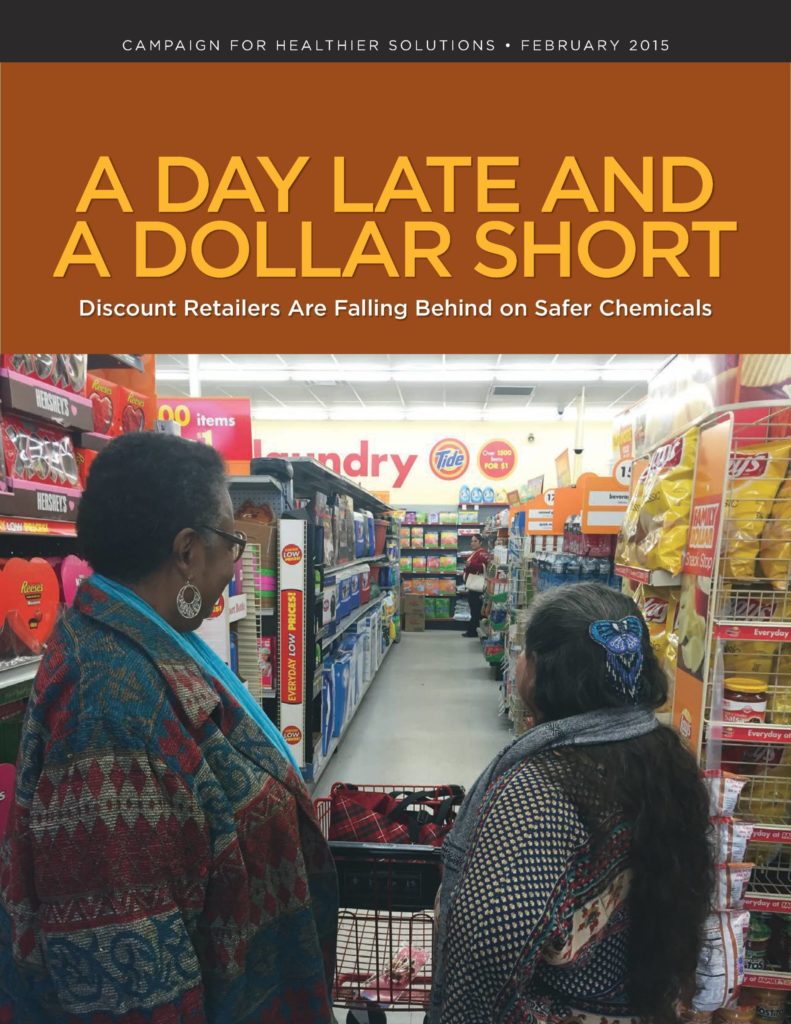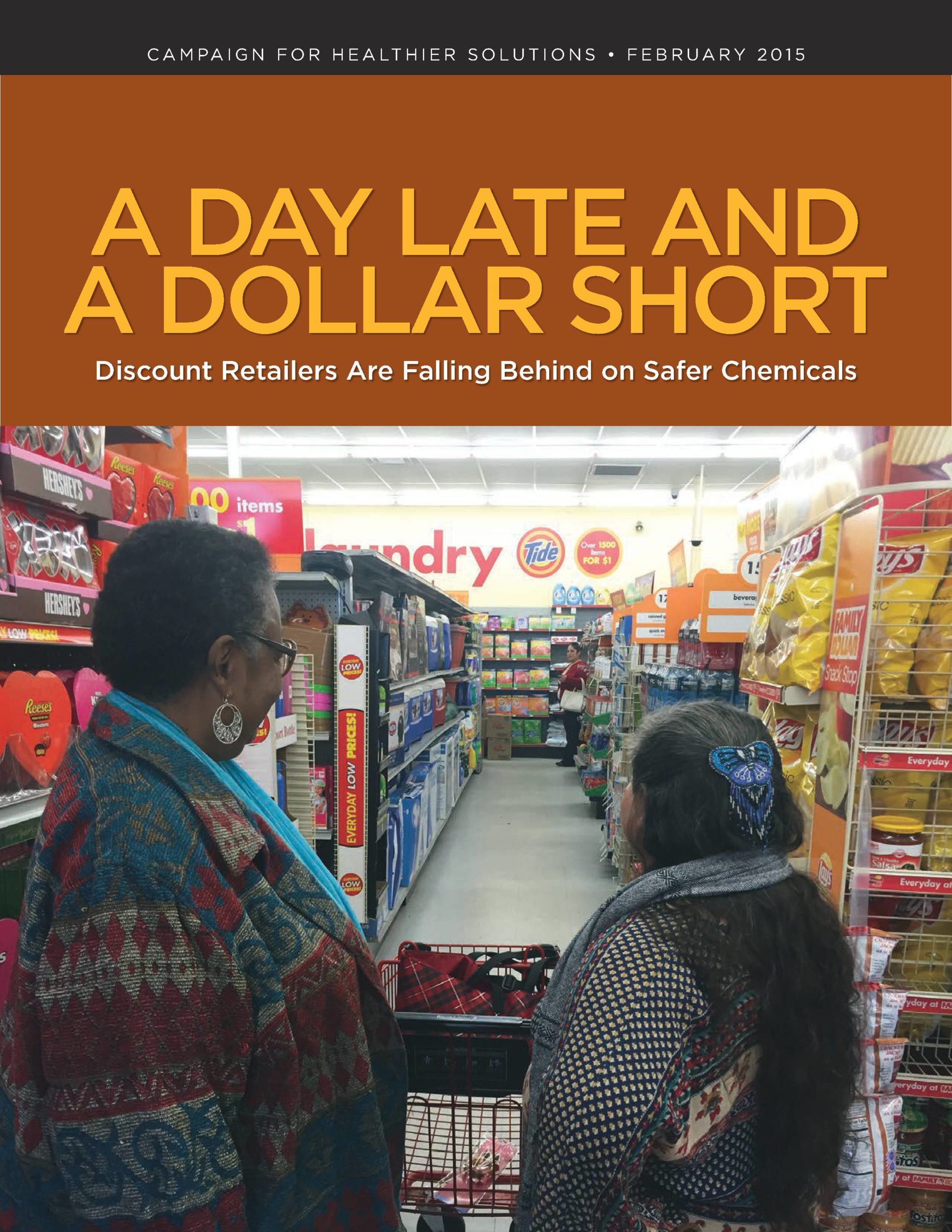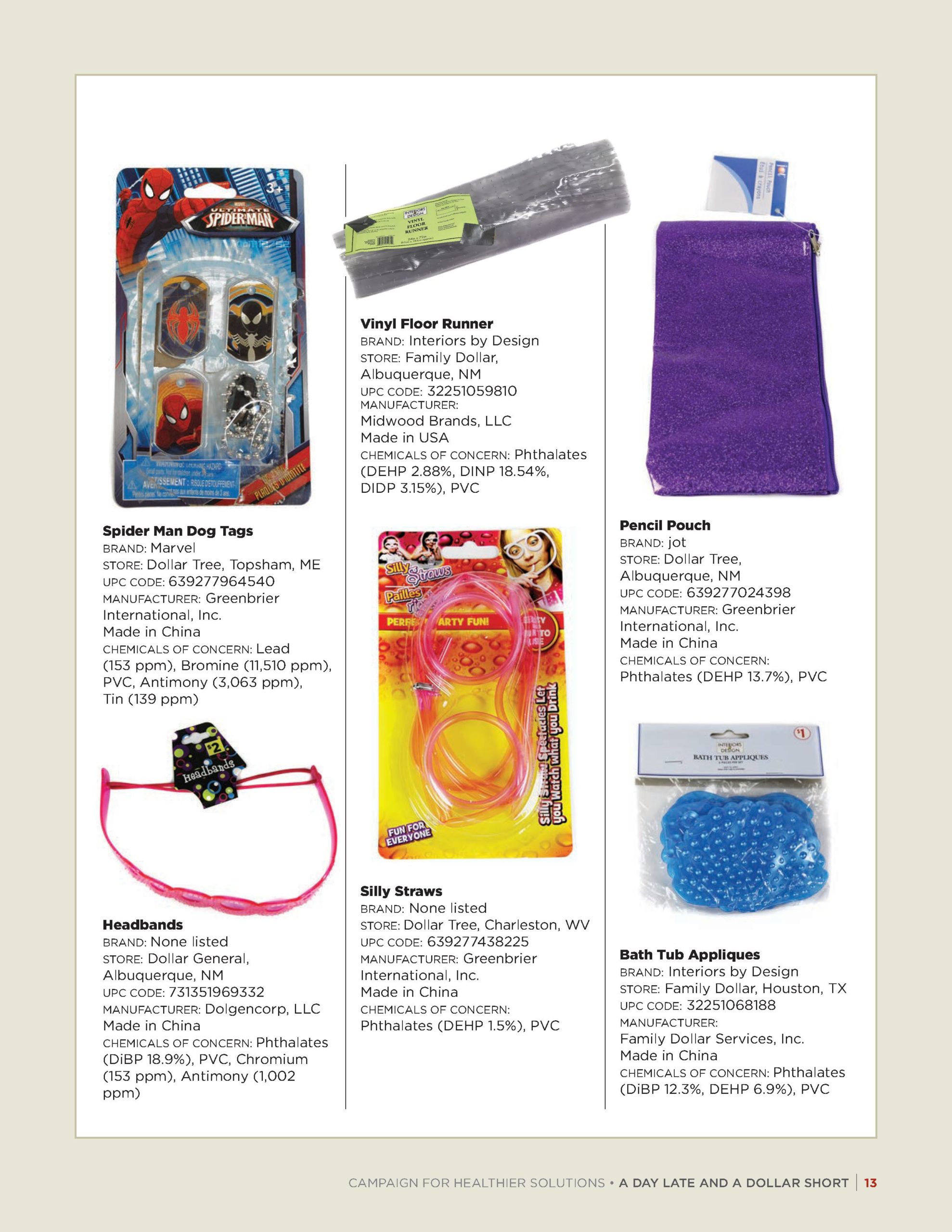Dollar stores may be appealing because they’re so cheap. But according to a new report, they also sell many products made from components contaminated with toxic chemicals. Those products include toys, jewelry, school supplies, cosmetics and even kids’ pajamas.
Research done by the Campaign for Healthier Solutions, a national coalition of more than 100 health, community and environmental justice organizations, found that over 81% of household items tested contained at least one hazardous chemical above levels of concern.
That means that of 164 items tested, 133 of them could pose a health and safety hazard to the consumers who use them. The items tested came from 99 Cents Only stores, Dollar General, Dollar Tree, and Family Dollar, the four largest dollar store chains in the U.S.
Toxic Dollar Stores Not Obvious
Big Green Purse has long advocated that consumers shift their spending to the greenest products available. The problem in these toxic dollar stores is that there is no way for consumers to know which products are “green” and which contain toxic compounds. So many products in the stores are contaminated that is is almost impossible for people to shop selectively. For example, even if a product might be relatively free of a dangerous chemical, it could be packaged in vinyl plastic or another material that is undesirable. Plus, dollar stores are often the only option for people on limited budgets, especially those living in rural communities.
The chemicals of concern tested for this report include:
√ phthalates, linked to birth defects, reduced fertility, cancer, learning disabilities, diabetes, and other health issues;
√ polyvinyl chloride plastic (PVC or vinyl), which creates hazards throughout its life cycle and has been linked to asthma and lung effects; and
√ toxic metals such as lead, which harms brain development, leading to learning disabilities, lower IQ, and other serious health impacts, especially in children.
The report also found that:
• 49% of products tested contained two or more hazardous chemicals above levels of concern;
• 38% of the products tested contained the toxic plastic PVC;
• 32% of a subset of vinyl plastic products tested for phthalates contained levels of regulated phthalates above the Consumer Product Safety Commission limit for children’s products.
Here is a sample of the test results conducted at all four major dollar store chains:
“Children are at greatest risk from exposure to toxic chemicals,” say the report’s authors, “because they eat, drink, and breathe more per pound of body weight than adults, their bodies do not process many toxic chemicals in the same way that adult bodies do, and children’s bodies are changing and developing rapidly.”
Babies, infants, and toddlers are especially vulnerable to chemical exposures during the first 1,000 days of life outside the womb. In addition to chemical exposures from personal care products and inhalation or ingestion, small children may also mouth or chew on toys or on other products. Many children crawl on, sit or sleep on, play with, or put into their mouths items that are not specifically toys or childcare products (and so may not be regulated for exposure to children).
The report’s authors note that rates of chronic diseases and health conditions linked to chemical exposures have risen sharply across the United States over the past several decades, especially for children. Some of the most striking increases are:
• Attention-deficit/hyperactivity disorder (ADHD) in children increased by 50% from 1997–2010, and autism spectrum disorders increased by 1,000%;
• Leukemia in children increased by 55% between 1975 and 2005, and primary brain cancer in children increased by 39%;
• The prevalence of asthma in children has more than doubled (100% increase) since 1980;
• Major birth defects are now the leading cause of infant death; the rate of some birth defects are increasing, e.g. hypospadias (birth defect of the urethra in males) has doubled;
• Incidence of breast cancer in adults has increased by 40%;
• Difficulty in conceiving and maintaining a pregnancy affected 25% more women in 2002 than in 1982; from 1982 to 1995, the incidence of reported difficulty almost doubled in younger women, ages 18–25.13.
The President’s Cancer Panel concluded in its 2010 report that “the true burden of environmentally induced cancer has been grossly underestimated.”
“The U.S chemical safety system that should ensure that chemicals used in commerce are safe is badly broken. In thirty-nine years since the passage of the federal law that should require chemicals used in consumer products to be safe (the Toxic Substances Control Act, or TSCA), only
about 200 chemicals out of 80,000 registered for commercial use have been fully screened for health and safety, and only 5 chemicals have ever been restricted.
When passed into law, TSCA approved more than 60,000 chemicals that were in existence prior to 1976. The law allows chemical manufacturers to keep the ingredients in some chemicals secret—nearly 20 percent of the 80,000 chemicals are secret, according to the U.S. Environmental Protection Agency (EPA). TSCA has failed to provide basic health and safety screening of most chemicals or protect public health from even the most hazardous chemicals, leaving consumers, manufacturers, and retailers to fend for themselves.
The Campaign for Healthier Solutions is urging that:
Discount Retailers adopt comprehensive chemical management policies to identify, disclose, and remove hazardous chemicals from their supply chains and from all products in their stores.
Local, State, and Federal Governments ensure that discount retailers comply with all relevant laws and regulations; and adopt public policies that require manufacturers and retailers to disclose hazardous chemicals in products and remove them when safer alternatives are available.
Families and Communities let Dollar store chains know that they want safer products, and join local and national efforts advocating for nontoxic products.
Big Green Purse recommends that, as an alternative to dollar stores, consumers purchase products from retailers like Wal-Mart and Target, which are making a stronger effort to stock and sell safer products. Even better, swap with neighbors and friends or buy gently used to reduce consumption overall.
You can read the full report from the Campaign for Healthier Solutions here.


















